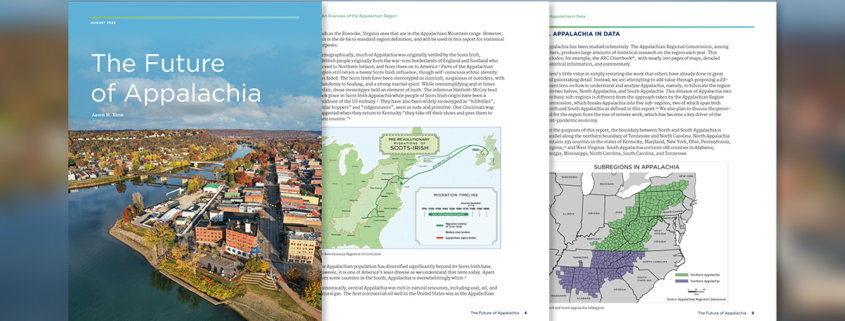The Future of Appalachia
Appalachia has been a byword for American underdevelopment and dysfunction for over a century.
The region has been the target of many government actions over decades attempting to improve its performance. While some of these have produced results, the region remains an underperformer relative to the rest of the country.
Recent trends provide reason for Appalachian optimism, however. One of them is the overall growth of the Sunbelt region, which is now producing organic growth and regeneration in the South Appalachian region, the subregion south of the northern borders of Tennessee and North Carolina. Over 70% of counties in South Appalachia are growing in population, over 80% of counties were adding jobs pre-pandemic, and over half of counties now boast more jobs than pre-pandemic levels. North Appalachia, by contrast, is showing much lower levels of growth, in keeping with the overall anemic trends of the northern United States.
The rise of remote work during the Covid-19 pandemic also provides new opportunities for Appalachia in terms of attracting new residents with either fully remote jobs or hybrid employment that only requires a limited number of days per week in the office. Additionally, remote work opens new job possibilities for existing Appalachian residents to access new employment opportunities, including higher wage jobs.
Some communities have already mobilized to take advantage of these programs, such as how West Virginia has created a formal relocation incentives program called Ascend to lure remote workers. Private enterprises are investing as well, including remote work brokers who connect Appalachian residents to remote work opportunities, and also housing developers seeking to capitalize on increased demand. Additionally, migration of hybrid workers to Appalachian counties in exurban areas is already happening organically, as rising housing prices push people out of major metropolitan areas. These developments are still in the early stages and will take many years to reach scale, especially in North Appalachia, but they do provide hope for significant positive change in many communities.
These new trends — sunbelt growth , remote work, combined with traditional assets such as cultural tourism or even high-tech growth — provide reasons for optimism for the future in significant parts of Appalachia.
Aaron M. Renn is a writer and consultant in Indianapolis. He was previously a managing director at Accenture and a Senior Fellow at the Manhattan Institute for Policy Research. His work has focused on the Rust Belt and other overlooked parts of America. His writing has appeared in a number of leading global publications, including The Guardian, The Wall Street Journal, The Atlantic and others, and he has been frequently cited in many publications around the world.
This report has been made possible by the support of the Searle Freedom Trust and Gerard Alexander. We also want to thank our board at the Urban Reform Institute for their support for this and other endeavors, and to our CEO Charles Blain for his support and leadership.



